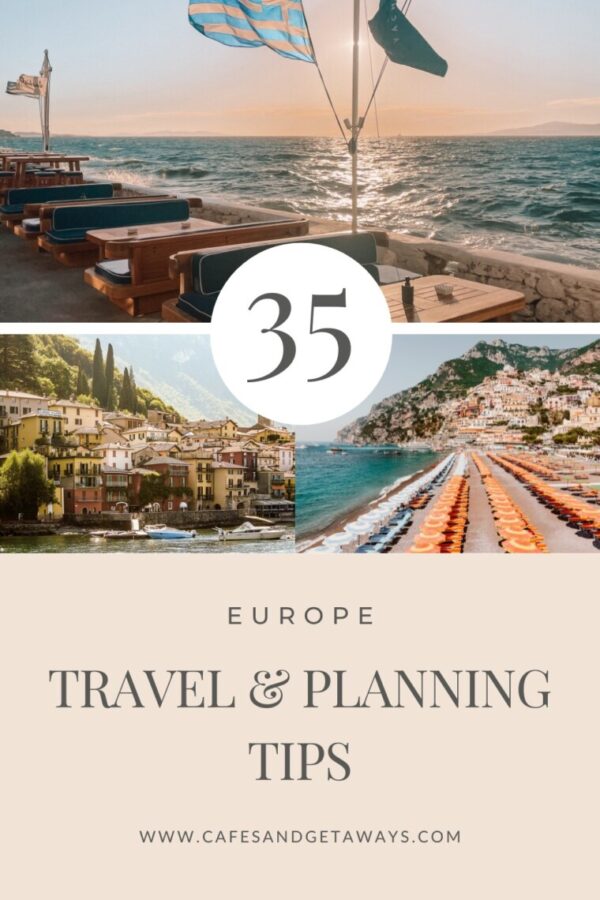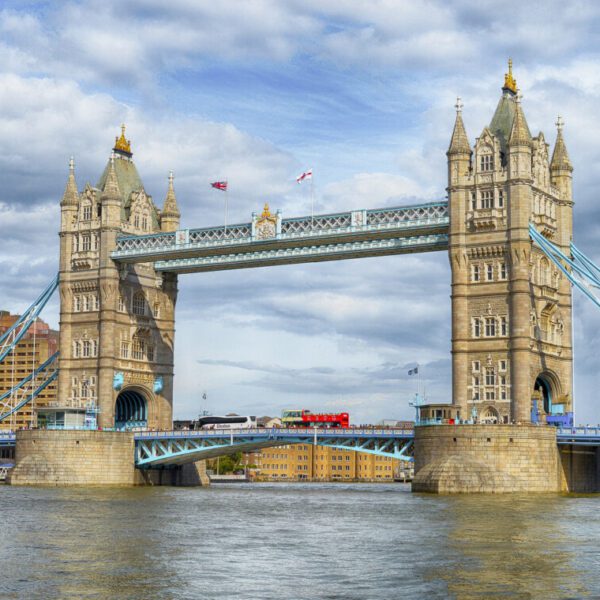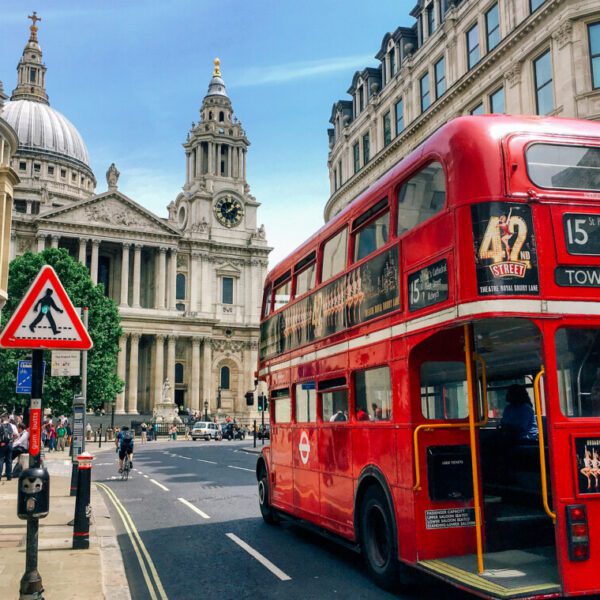Last updated on August 31st, 2023
Planning a trip to Europe is exciting but can take a lot of work, especially if this is your first visit. To help, I’ve compiled a list of Europe travel tips that I have picked up from countless trips and experiences.
From transportation hacks to money-saving tips, and helpful resources, there are plenty of ways to take the stress out of planning. Even if you are a seasoned traveler, these may come in handy!
Europe is a large continent comprising over 50 countries, each with its unique culture, rules, and way of life. The following tips are general guides to visiting Europe. Look at the city guides and Europe destinations section for more detailed information on specific places and countries.
READ MORE: The Ultimate Europe Travel Checklist
Accommodation Tips for Europe
Required Documents for Check-in
Most accommodations, both hotels and vacation rentals, will require a copy of your passport at check-in. They use this for business-related purposes, and it is normal. Although this should not be a big deal as you will already need your passport to travel, I felt it was worth mentioning, so you don’t worry when they ask.
Transportation Services
Ask your hotel concierge to schedule transportation for you. Some will offer a transfer service from the airport or train station for a price. In addition, they are always willing to call a taxi for you if needed. Many hotels have relationships with these companies, which can help get service quickly.
Additional Fees for Tourists
When you book your accommodation, you will likely see a small additional fee shown as a city tax at the bottom of your reservation. The costs are set per night and person and vary in price. Usually, hotels charge no more than €4 per night per guest, paid at arrival or during checkout.

Turn Hotel Power on Yourself
This was one tip I wish I had known before my first trip to Europe. Many hotels and vacation rentals require you to turn the power on in your room using your hotel key. Europe is known for being very energy efficient, so when rooms are vacant, the power shuts off to save power.
I didn’t experience this until my second European trip, and the concierge said nothing about it at check-in. When we got to our room and tried to turn the power on, it took us a minute to realize why it was not working.
So you don’t panic as we did, if this happens to you, look for a slot next to the door. Slide your hotel key into the slight, and you will have power. When you’re ready to leave, take the key with you, and it will turn back off while you are out.
Elevator Access
Many cities throughout Europe have been around for hundreds of years. These buildings are just as old and, as a result, only sometimes have modern amenities. Apartments and hotel rooms usually are smaller due to the need for more space. The elevators are also small in size if there are any at all.
Buildings that have been renovated may have a small lift that can fit 1-2 people snuggly inside. Some buildings will not even have one and can be several levels in height. If you require easy access to your room, book a hotel with an elevator or reserve a room on the ground floor.
Floors are Different in Europe
If you live in the United States or other parts of the world, you will be used to the main floor, referred to as the first floor. It is known as the ground floor in Europe, with the first level off the ground being the 1st. To help me remember, I think of one flight of stairs as the first floor, two flights of stairs as the second, and so on.

Air Conditioning Availability
As I said earlier, Europe is incredibly energy efficient. As a result, air conditioning is only sometimes standard in hotels and rarer with vacation rentals. Some will only turn on their A.C. during the warmest months of July and August, while others won’t have it all.
Hotels, especially in larger cities, are more likely to have air conditioning than vacation rentals. Whatever accommodation you plan on booking, check under the property’s facilities section to double-check they have air conditioning available if that is something you’d like.
Vacation Rental Appliances
If you plan on traveling for longer then a week, you will want to stay somewhere with laundry services. Some hotels offer this for a fee, but vacation rentals are also great.
One important thing to know is that most places in Europe may have a small washing machine but no dryer. In addition, only a few will have a combo machine that is both a washer and dryer. So instead, there will typically be a clothing rack or other places to hang your clothes to dry.
Since spaces in Europe are on the smaller side, especially in the cities, the machines can also be much smaller than you’ve experienced. Just like with air conditioning, check under the accommodation’s facilities section to see what they offer before booking.


Using Trains in Europe Tips
Trains are an Efficient Way to Get Around
One of my favorite ways to get from one destination to the other is by train. High-speed trains get you where you need to go much faster. They are more expensive than buses but are worth the additional fee for the time saved commuting and the overall comfort.
Trains offer dining packages and lunch and dinner service depending on where you are in Europe. And best of all, trains have plenty of storage room for your luggage and first and second-class seating options.
One thing to know is that each country has its own train companies. Sites like Omio and Rail Europe make planning easy as they find you tickets and routes for your destination and take the hard work out of planning your travels.
I also like to use Trainline for booking transportation. The site works with 270 companies for 45 countries in Europe and the UK. Trainline is the best choice if you are traveling throughout England.
Taxi Apps Can Make Things Much Easier
Companies like Uber are becoming increasingly prominent in highly populated areas but are yet to be everywhere. Your best bet is to call a local taxi service, which your hotel concierge will happily do for you.
Many large cities also have taxi hubs where you will find taxis waiting for customers. Places like Rome and Paris have many of these around the city. But since some areas are less efficient with their services, downloading an App can help you. Apps like Free Now and Taxi E.U. make hailing a taxi much easier and work in over 100 different cities.

Driving in Europe Tips
Get an International Driving Permit
Some countries will require that you have an International Driving Permit for renting a car, scooter, or ATV if you are a non-EU resident. International permits can be purchased online before your trip. That being said, we’ve barely ever been asked for our IDP, but it is good to have, just in case!
Smaller Cars are Normally Better
You will notice that most people drive extremely compact cars in Europe. That is because the roads are narrow, especially in the cities. Also, parking can be challenging in some places, requiring you to squeeze into tight spaces.
When booking a car, I’d recommend avoiding the large ones. You will likely not need them unless you drive with a larger group. Plus, the smaller the car, the cheaper the rate.
Automatic Cars Will Cost More
The majority of cars made in Europe are manual. Therefore, it will cost you extra if you want an automatic car. Also, you will want to book your vehicle well in advance as they have a smaller inventory.
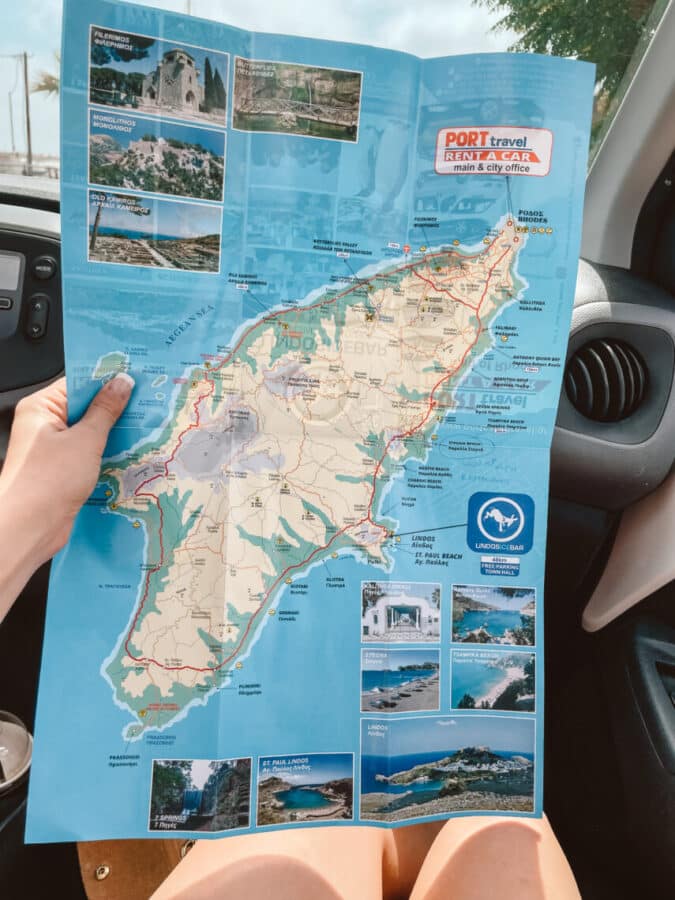

There are Lots of Toll Roads
If you drive from one major city to another, you will likely run into some toll roads. Although credit card machines are becoming increasingly common, carrying cash on you for these is a good idea.
When using a car to travel, you can filter your GPS to avoid toll roads, but that could take much more time for your trip. For example, when traveling from Nice to Avignon in the South of France, avoiding the toll roads will add two hours to your drive.
Rentals are Best in the Countryside
If you have ever been to Europe before, you’ve probably seen firsthand how busy the roads can get. Drivers can be very aggressive, roads extremely tight, and some rules and regulations are unclear.
If you want to rent a car, save it for more rural areas. Besides, most European cities are walkable and have cheap and efficient public transportation. If you spend part of your time in a city and the rest in the countryside, try to pick up your rental on the outskirts of town, not the city center.

Cash and Credit Cards Tips
Cash and ATMs
Credit Card machines are more and more common in Europe. However, without fail, there are always certain places that only accept cash, no matter where you go.
So having cash on hand is always a good idea if you run into these situations, especially for tipping hotel concierge for helping with luggage or taxi drivers.
Don’t carry too much on you at once, though! You can always get some out at the ATM and use your card when possible. Lots of people avoid ATMs because of the transaction fees. But I’d rather use the ATM here or there on my trip rather than have too much cash on me at once.
Using ATMs from banks tends to have a much more reasonable withdrawal fee. And when you do withdraw money, use the currency of the country you are in currently.
Use Travel Credit Cards
Many credit cards, such as American Express and Discover, do not charge foreign transaction fees. In addition, you are earning points that can be used towards your next trip.
You can use your card for most transactions and save your cash when you need it. Most importantly, let your credit companies know you are traveling so they do not block your transactions.

Tours and Experiences Tips
Book your Tours Months in Advance
Whether you are interested in joining a guided tour, partaking in a wine tasting, or planning on purchasing admission tickets to an attraction, do it before your trip.
Waiting to purchase tickets until just before you go or the day of risks tickets being sold out and escalated prices. This is even more common with destinations with few options.
I use Get Your Guide most of the time to book my experiences. They search for popular tours from different companies and put them in one place to make your planning much more manageable. Best of all, they offer cancelation up to 24 hours before your trip if your travel plans change.
Research Opening Hours
Many places will only be open 5 or 6 days a week and not necessarily on the same day. For example, many businesses close on Monday, depending on where and when you visit.
Also, seasonal destinations that close during winter alter their schedules throughout the year. For example, Lake Como has little availability during the winter. In the spring and fall, attractions will still be open, but visiting hours will be shorter than if you visit during the summer.


Take Advantage of Skip-the-Line Tickets
Any new destination you visit, you want to experience as much as you can. The worst feeling is standing in line to get into a museum or another attraction instead of spending it exploring.
Yes, skip-the-line tickets cost extra, but they are worth the spare time you have to experience a new city. Joining a tour is another thing you can do to avoid long lines.
Another essential piece of information is that city passes don’t guarantee skip-the-line entrance to all places. A city pass allows you to access several attractions for a set price. For example, the Paris Pass grants you entrance to over 50 attractions. You choose the pass duration, and you can visit any of the sites on the list for that number of days.
Purchasing the pass can save you some money but will require you to get in line. I’d recommend either getting to the more popular attractions when they open or purchasing an individual ticket for that place.
When we went to Paris, we visited the Louvre right when it opened and only waited about 20 minutes to get in. However, the wait would have been much longer if we had gone any later. The Palace of Versailles, on the other hand, took us two hours of standing in line. Knowing that now, we would purchase a skip-the-line entrance ticket next time instead.
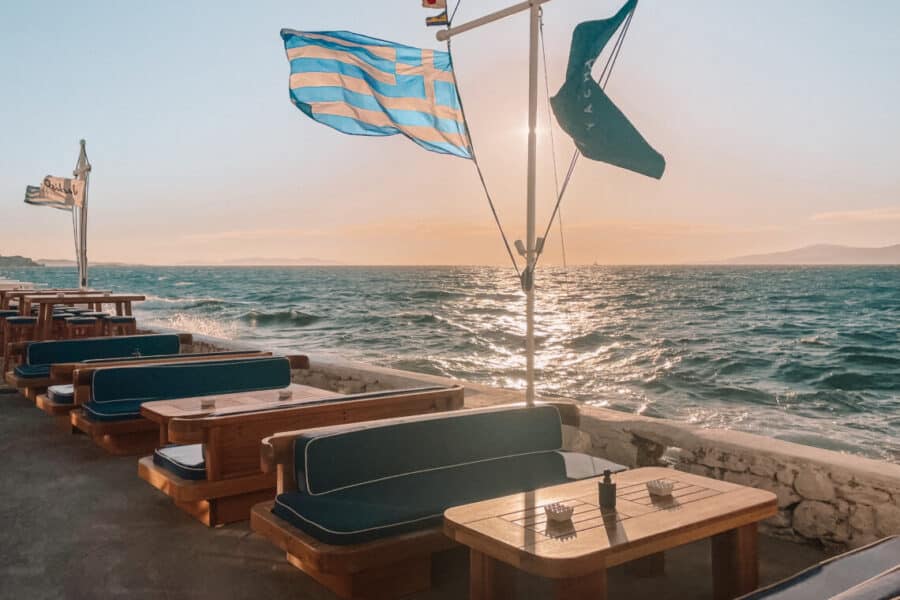
Restaurant Tips for Europe
Avoid Tourist Spots
One of the most important eating tips is to avoid restaurants close to touristy areas and main attractions. Although there may be some terrific places to eat there, you run into the risk of higher prices and lower quality in these areas.
Researching good places to eat before your trip is always a good thing to do. However, if you don’t want to plan every meal or get hungry while you’re out exploring, the best thing to do is try to avoid these places.
Research Where to Eat Ahead of Time
Food is a great way to learn about new cultures and experience new places. Therefore, I research great places to eat before any trip to ensure I go somewhere with delicious food and excellent service.
I will look at different resources online to cross-reference people’s reviews and experiences. For example, I have found over the years that the most famous restaurants do not always have the best food! Many times the atmosphere or views does make up for this.
Planning where to eat before your trip will help you budget and also ensure that you will have a great dining experience. But don’t feel like you must plan out every restaurant in advance.
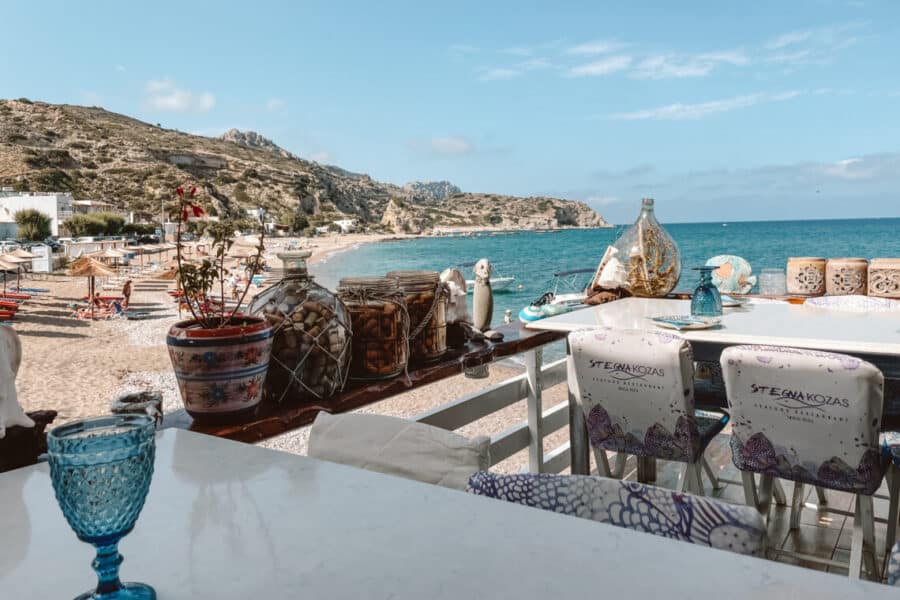
Don’t Be in a Rush
One of the most important tips about eating in Europe is that the restaurant culture differs here. People dine out to enjoy each other’s company and relax. A quick meal is not the norm.
Unlike in places like the U.S., where servers try to turn tables quickly, it is the opposite. A meal in Europe typically lasts 1.5-2 hours, which is one reason we love it so much.
Dining out is an experience for Europeans to catch up with friends and family and socialize. Many meals also have multiple courses, and service is slower. They are not ignoring you or trying to be rude. This is part of the culture. They actually find it rude to interrupt your meal and will leave you alone most of the time.
If you need something or are ready for the check, you will need to ask. And the worst thing you can do is try and rush the server. If you only have an hour to spare for your meal, get a quick bite to go instead.
Tipping is Not Always Necessary
Tipping etiquette can change depending on where you visit, even within a particular country. Since there is not one general rule, research tipping rules before you travel to ensure you are following the proper guidelines.
For example, the service fee is usually added to your bill in France, and you are not expected to leave any additional tip. It is always a nice gesture to round up to the nearest euro if paying in cash. And I like to leave a couple of extra euros for excellent service, but this is up to you.
If a service fee is not added to your tip, then a 5-10% tip is recommended. When in doubt, check the bill before you pay

Restaurants Have Lunch and Dinner Hours
When researching places to eat, check their opening times. Many will close for a few hours between the lunch and dinner rush. However, some will only open for dinner and even be closed on certain days of the week.
Not all places do this, though, so don’t worry about being unable to find somewhere to eat. There will always be some tasty options available!
Reservations Are Helpful
Making reservations is important when traveling during busy seasons or eating at popular restaurants. Some places, such as Santorini, may even require a small deposit for your reservation as they remain busy all the time during tourist season.
Many restaurants are so popular that they will only take people with reservations. You don’t need to make them for every single meal, but for most dinners, it is a good idea, especially if it is somewhere you are really excited about trying.
Without reservations, you can wait an extremely long time for a table. Restaurants will either have you wait in a line outside or turn you away.
Online reservations are becoming increasingly popular. If you are worried about the language barrier, check their website first or email the restaurant beforehand about reserving a table.
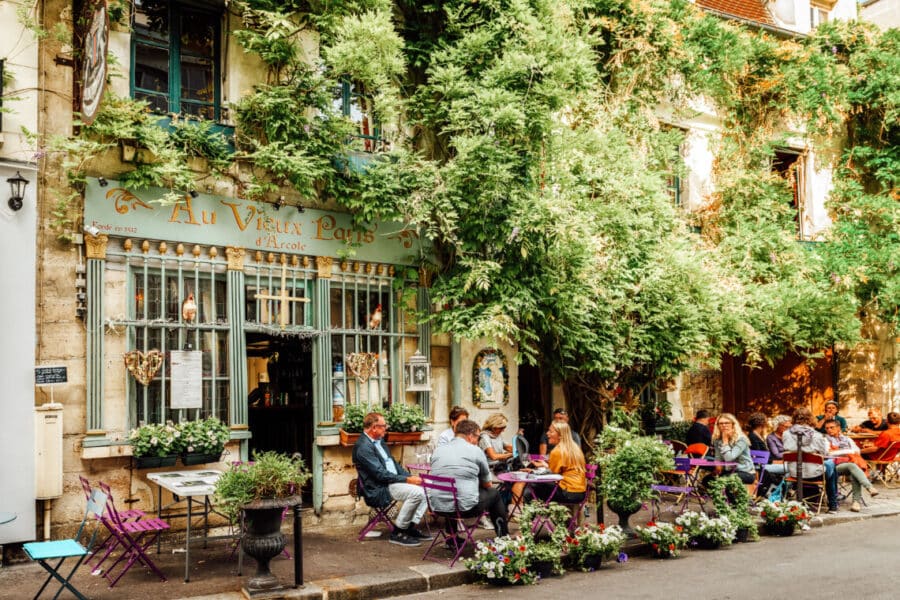
Ask the Locals for Recommendations
One of the best ways to find great food is to ask the people who live in the city for their recommendations. Many will guide you toward local restaurants you may not have heard about otherwise. Some of the best food we’ve had was from places recommended to us by locals.
Water and Bread are Not Usually Free
This is not the case everywhere, but generally, restaurants serve only bottled water, which is an additional fee. They also give you the option of sparkling water with your meals. If you’d prefer free tap water, be specific with your server when you order. You won’t know if they offer it unless you ask!
Some places will also give you bread and small appetizers with or before your meal. Bread is a standard practice in countries like Italy to receive with your meal. These are an added cost.
If a couple of extra euros bothers you, you can politely reject it. However, you run the chance of offending your server. For the small additional fee, keep the bread. It is usually quite delicious and worth it!

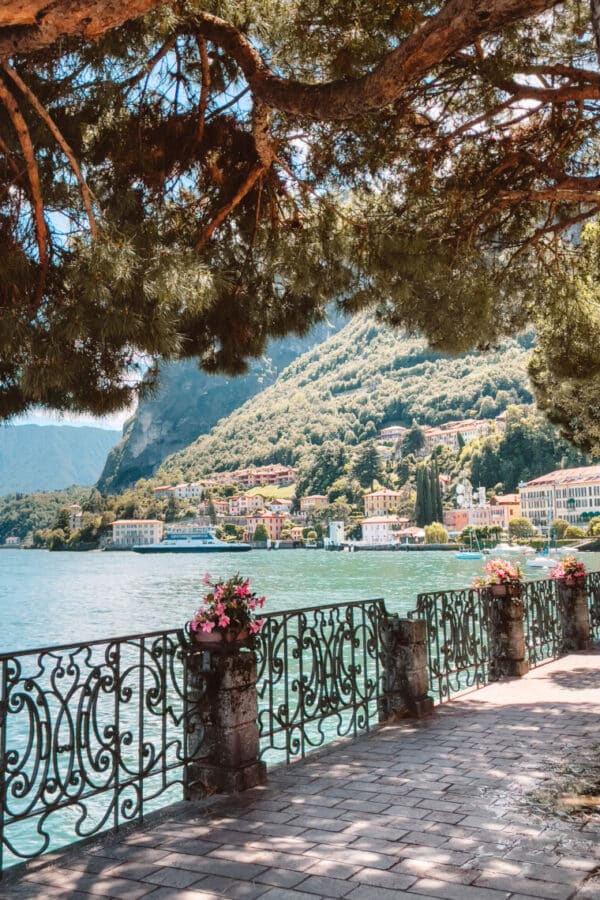
Packing for Europe Tips
Plan Out Your Wardrobe
You don’t necessarily have to plan what to wear daily, but planning out some outfits can help keep you from overpacking. Think about where you are going and for how long to help you decide what you need to bring. Bring a jacket or warmer sweater and comfortable shoes no matter where you go. Even in July and August, you can experience cooler nights.
Bring an International Adaptor
Each country has different outlets, and you will need an adaptor to use any electronic devices you have with you. Most of Europe uses the same adaptors, but a few countries, such as the U.K., have a different plug.
The EPICKA Universal Adapter works in Europe, Uk, Australia, and other places.
The Biggest Suitcase is Not Always the Best
What luggage to bring with you is one travel tip I wish I had known before my first international trip. I figured getting the largest suitcase would be more efficient since everything was in one place. Wrong!
Besides my suitcase weighing over 50 pounds and causing me to pay an additional baggage fee at the airport, my luggage was difficult to bring with me from place to place.
That won’t be a concern if you stay at one place your entire vacation. However, since we typically visit multiple destinations in one trip, lugging my large suitcase up and down stairs, down the streets, and through trains was easier said than done.
Instead, purchase two smaller suitcases. Check one in and keep the other as a carry-on. You will have just as much packing space, but they are much easier to handle. Trust me. This was a game-changer!

Other Important Europe Travel Tips
Take into Account Travel Time
If you travel from one destination to the next, add extra time to your itinerary. Whether taking the bus, train, or flying to the next destination, you want to account for everything.
Even a simple bus or train ride can take much longer than planned. Getting to the station early and waiting for your bus or train takes longer than you’d think. Sometimes even finding the right platform can take time. I can’t tell you how often we’ve walked in circles trying to find the correct one!
Traveling between destinations is much more complicated than you may think. Especially if it’s a place you’ve never been before. And transportation may not be readily available.
We used ferries to hop from island to island when we traveled to Greece. Since we were visiting in June, I thought plenty of ferries would be available. However, for our trip from Santorini to Milos, there ended up being only one ferry route for that day, which was at 2:30 in the afternoon.
Not planning ahead could have affected our itinerary because we generally travel right after checkout in the morning. Knowing this in advance gave me plenty of time to plan our schedule around this.
Travel During the Shoulder Season
Try to schedule your trip during the shoulder season for better rates and fewer crowds. Depending on where you travel, this may be different. July and August are peak seasons anywhere you go and are the busiest and most expensive times to travel. Shoulder seasons are typically between March and early Jun and September to October.
Large cities such as Paris can be visited all year round and are just as pretty during the Winter months if you don’t mind the cold. Paris and other European cities are also extremely magical during November and December as locals get ready for the holidays and the entire town is decorated.

Fight the Urge to Sleep In
The best time to explore is early morning before everyone gets up. The streets are much quieter, and you can stroll around and take in the surrounding sites almost entirely on your own.
Try getting out the door by at least 9:00 am, if not earlier. Chances are you will be so excited to explore that this won’t be too much of an effort for you. Trust me. It is worth it!
Don’t Pack Too Much In
One of the most tempting things to do in packing your itinerary full of experiences. As much as you’d like to see everything in a short amount of time, don’t do it! Planning too much in one day can be exhausting and defeats the purpose of traveling in the first place, to relax.
One way to do this is to pick the top things you’d like to do first. In between, leave some room open. That way, if you have the time to stumble across something you want to explore further, you have the time to do so.
Conclusion
I hope these practical Europe travel tips were helpful and you were able to learn something you may not have known before.
And although not every place is the same, these general guidelines are a great starting point when planning your trip.
Check out my city guides or top European destinations for more specific information on a particular location.
Check out these other travel planning resources!
Travel Planning Resources
BOOK YOUR FLIGHT |Skyscanner is the top search engine for finding and booking flights. They price check over 1,200 travel sites to help you find the best prices.
VIEW ACCOMMODATIONS |For booking hotels and vacation rentals Booking.com is a top resource . They offer some of the cheapest rates and different payment options.
PLAN TRANSPORTATION
- Rental Car: Discover Cars is my go-to site when booking rentals. They work with hundreds of companies worldwide to help you find the best car for your needs and budget.
- Trains: Rail Europe is the leading company in Europe for train travel in Europe. They help you easily book passage by looking at routes, timetables, and prices for 50 different train companies.
- Bus: Omio is an easy website to use for booking train and bus tickets. Similar to Skyscanner, the website looks at hundreds of transport companies to get you the best deals.
SCHEDULE YOUR TOURS | There are many top companies available in Europe. Get Your Guide is one of the best sites for tours, excursions, and activities. Viator is another terrific website for all types of experiences.
GET TRAVEL INSURANCE | Having travel insurance is always a good idea. World Nomads is one of the top travel insurance companies. It will cover you if you must cancel your trip or if something unexpected happens.
Check out the resource page for additional travel planning resources.
Pin it for Later



